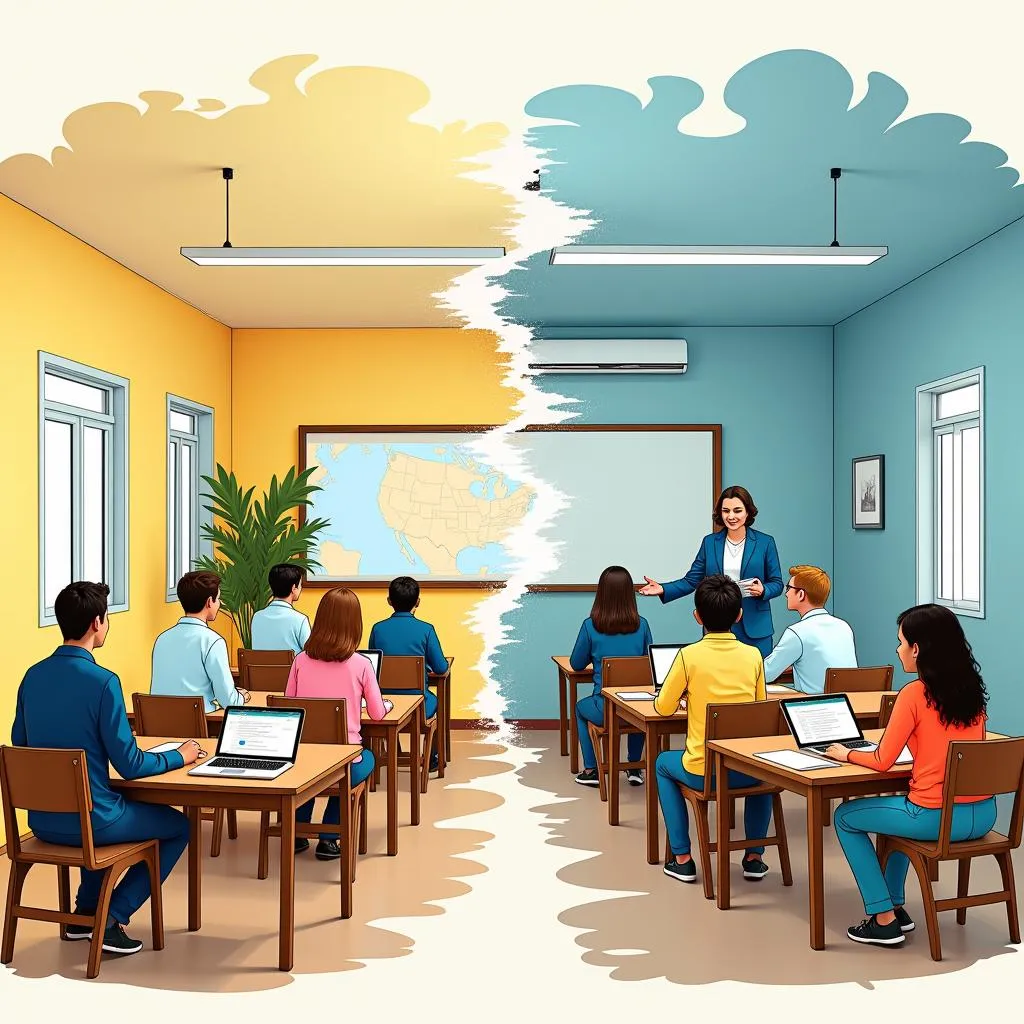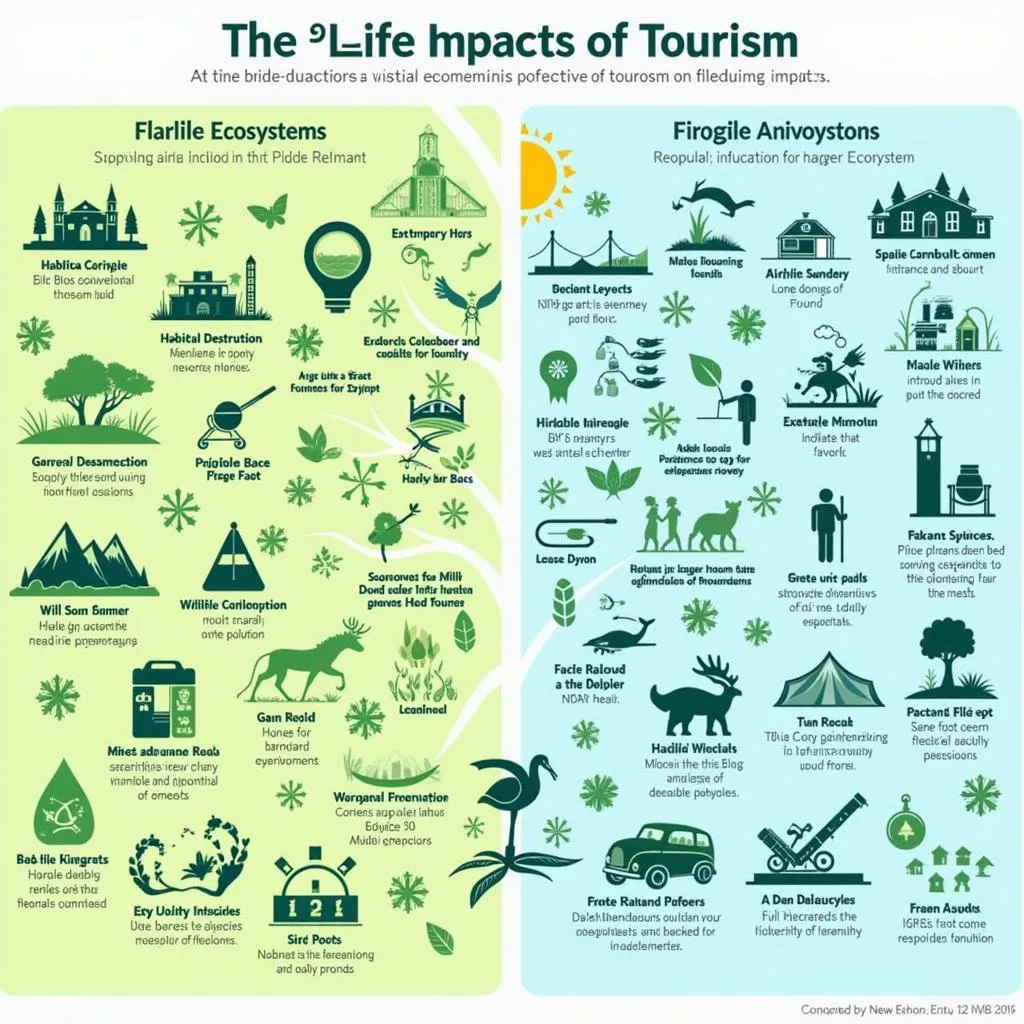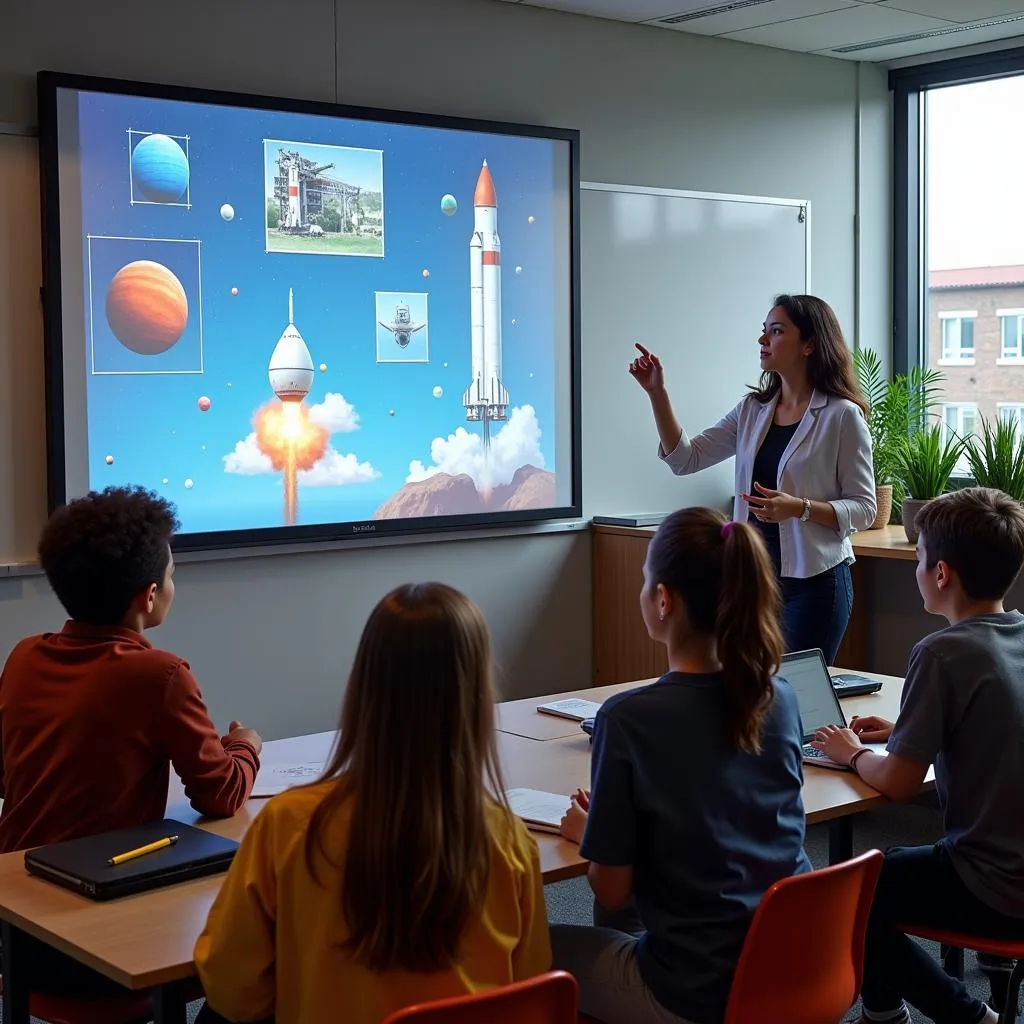Public art projects in urban areas have become an increasingly popular topic in IELTS Writing Task 2 exams. Based on recent trends and analysis of past exam questions, this theme is likely to appear more frequently in future tests. Let’s explore a relevant question that has appeared in recent IELTS exams:
Nội dung bài viết
Some people think that governments should spend money on public art projects like sculptures and paintings in cities. Others believe that this money should be spent on more important things. Discuss both views and give your own opinion.
This question addresses the debate surrounding government investment in public art projects, a topic that resonates with many countries’ urban development strategies. Let’s analyze the question and provide sample essays for different band scores.
Question Analysis
The question presents two contrasting views:
- Governments should invest in public art projects in cities.
- Government funds should be allocated to more critical areas.
To answer this question effectively, you need to:
- Discuss both perspectives
- Provide reasons and examples to support each view
- State your own opinion and justify it
Remember to maintain a balanced approach while presenting your arguments.
Sample Essay for Band 8-9
Public art has long been a subject of debate when it comes to government spending priorities. While some argue that investing in sculptures and paintings enhances urban aesthetics and culture, others contend that these funds could be better utilized for more pressing needs. In my opinion, a balanced approach that incorporates public art into broader urban development strategies is the most beneficial course of action.
Those in favor of government expenditure on public art projects argue that such initiatives contribute significantly to a city’s cultural identity and appeal. Sculptures, murals, and installations can transform mundane urban spaces into vibrant, thought-provoking environments that inspire creativity and foster community pride. Moreover, public art often becomes a tourist attraction, potentially boosting local economies through increased visitors and associated spending. Cities like Barcelona and Melbourne have successfully leveraged public art to enhance their global reputation and attract tourists and businesses alike.
On the other hand, critics argue that in the face of more urgent societal needs, spending on public art is a luxury that many cities cannot afford. They contend that funds allocated to art projects could be better spent on improving essential services such as healthcare, education, or infrastructure. In cities grappling with issues like homelessness, inadequate public transportation, or underfunded schools, prioritizing art over these fundamental needs may seem misguided or even irresponsible.
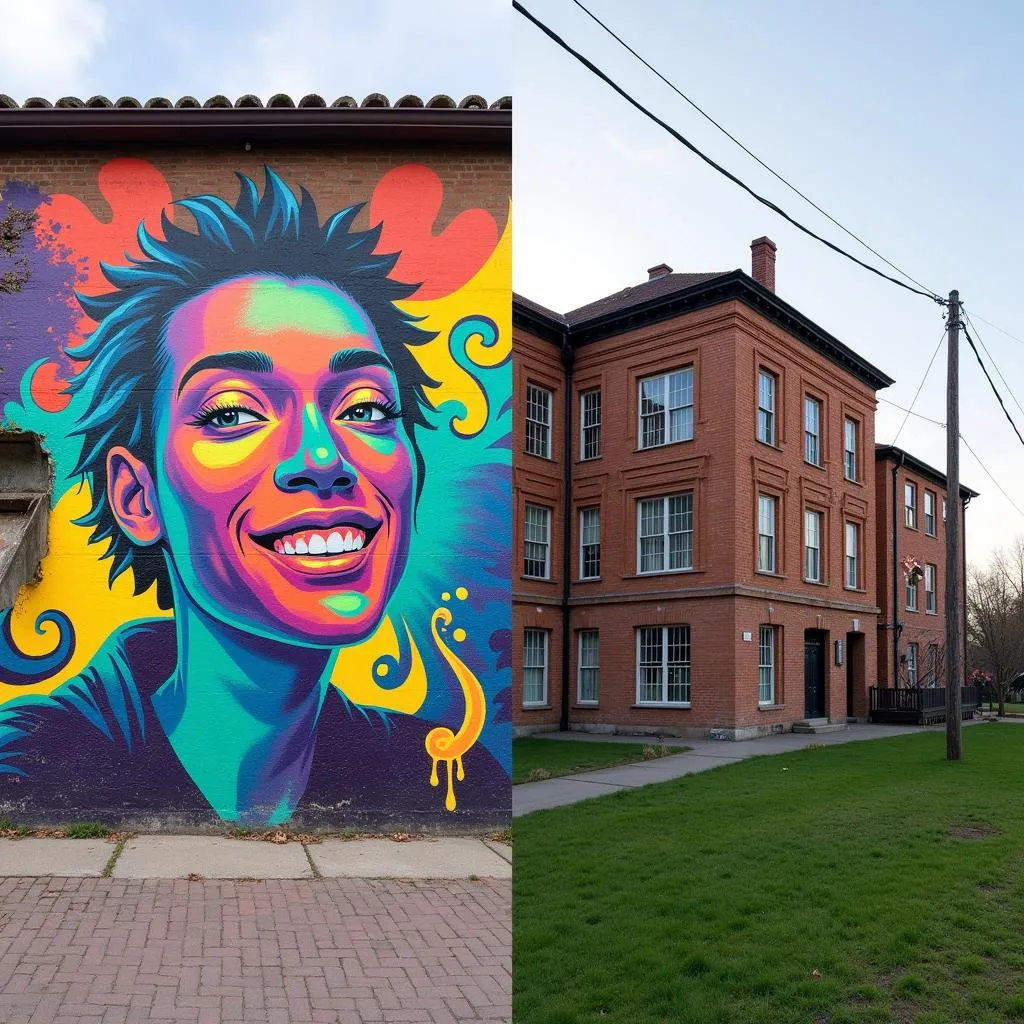 Debate on public art investment in cities
Debate on public art investment in cities
In my view, the solution lies in integrating public art into broader urban development initiatives rather than treating it as a separate, competing interest. By incorporating art into infrastructure projects, city planning, and community development programs, governments can achieve multiple objectives simultaneously. For instance, commissioning artists to design functional public spaces or including artistic elements in new building facades can enhance aesthetics while serving practical purposes. This approach not only beautifies the city but also supports local artists and creates a more engaging urban environment without significantly diverting resources from essential services.
Furthermore, public-private partnerships and community involvement can help offset the costs of public art projects. By encouraging corporate sponsorships, crowdfunding initiatives, or volunteer-driven art programs, cities can cultivate a thriving arts scene without heavily burdening public budgets. This collaborative approach ensures that investments in public art complement rather than compete with other urban priorities.
In conclusion, while the debate over government spending on public art versus other critical needs is valid, I believe that a nuanced, integrated approach can yield the best outcomes for urban communities. By thoughtfully incorporating art into broader city development strategies and leveraging diverse funding sources, cities can enhance their cultural vibrancy and livability without compromising on essential services. This balanced strategy not only enriches the urban landscape but also contributes to the overall well-being and prosperity of city residents.
(Word count: 465)
Sample Essay for Band 6-7
Nowadays, there is a debate about whether governments should spend money on public art projects in cities or use this money for more important things. This essay will discuss both views and give my opinion.
On one hand, some people think that governments should invest in public art like sculptures and paintings in urban areas. They believe that art makes cities more beautiful and interesting for both residents and tourists. Public art can improve the appearance of streets and parks, making them more attractive places to visit and live. Additionally, art can express the culture and history of a city, helping to create a unique identity. For example, the famous “Bean” sculpture in Chicago has become a symbol of the city and attracts many visitors.
On the other hand, others argue that government money should be spent on more important things. They think that there are more urgent needs in cities, such as improving healthcare, education, or public transportation. These people believe that basic services and infrastructure should be the priority, rather than art projects that may seem unnecessary. In cities with problems like homelessness or poor schools, spending money on art might seem wasteful. They argue that improving people’s living conditions is more important than making the city look nice.
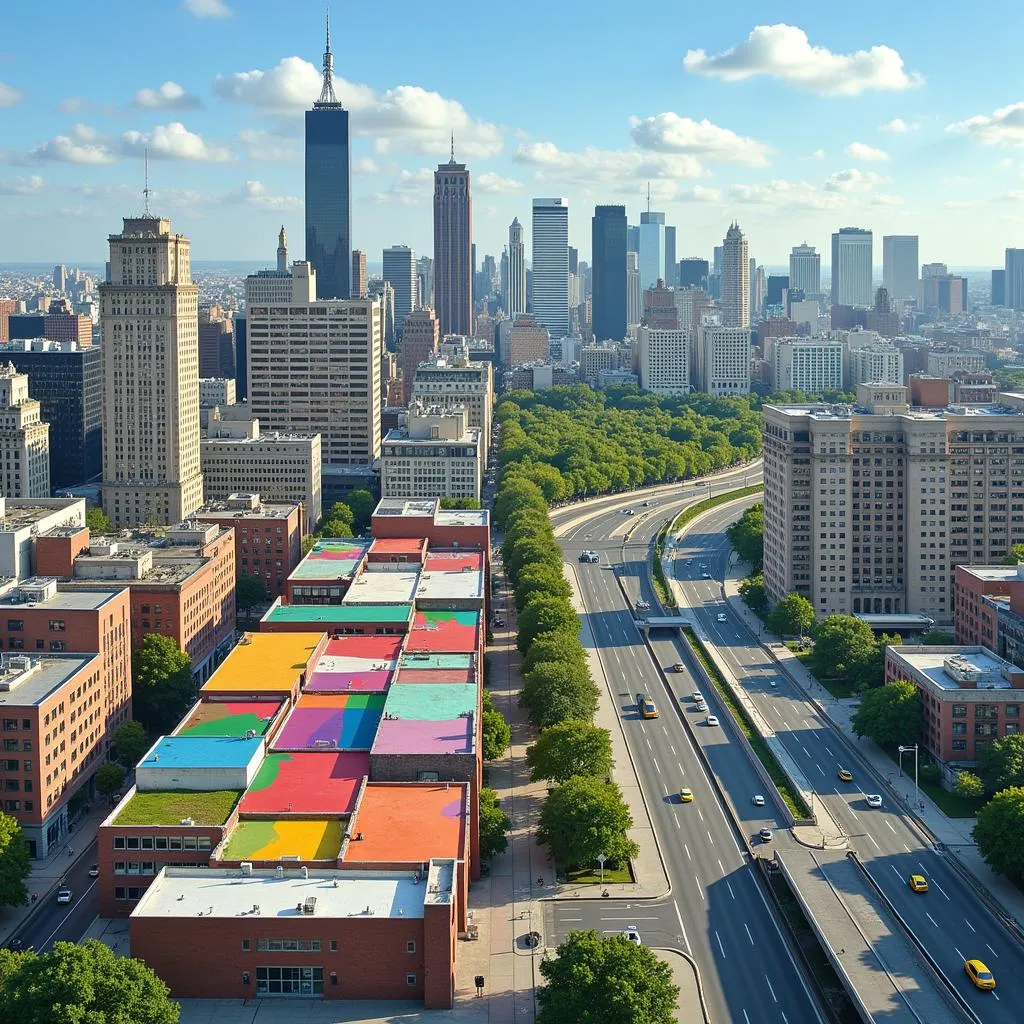 Public art versus essential services in urban planning
Public art versus essential services in urban planning
In my opinion, I think that both views have merit, but a balance is necessary. While it’s true that essential services should be the main priority, I believe that public art also has an important role in urban development. Art can improve the quality of life in cities by creating a more pleasant environment and promoting cultural awareness. However, governments should be careful to allocate funds wisely, ensuring that basic needs are met before investing heavily in art projects.
One possible solution could be to integrate art into necessary infrastructure projects. For example, when building new public buildings or renovating streets, a small portion of the budget could be used to include artistic elements. This way, cities can improve both their functionality and their aesthetic appeal without neglecting important services.
In conclusion, while spending on essential services should be the priority, I believe that public art projects can also contribute positively to urban life if managed carefully. Governments should strive to find a balance that addresses both practical needs and cultural enrichment in cities.
(Word count: 401)
Explanation of Band Scores
Band 8-9 Essay
This essay demonstrates excellence in several key areas:
-
Task Achievement: The essay fully addresses all parts of the task, discussing both views comprehensively and providing a clear personal opinion with justification.
-
Coherence and Cohesion: Ideas are logically organized with clear progression throughout. Paragraphs are well-linked, and cohesive devices are used effectively.
-
Lexical Resource: A wide range of vocabulary is used with flexibility and precision. Less common lexical items are used naturally (e.g., “vibrant, thought-provoking environments,” “leveraging diverse funding sources”).
-
Grammatical Range and Accuracy: A wide range of complex structures is used accurately. Errors are rare and minor.
-
Development of Ideas: Each point is well-developed with relevant examples and explanations. The essay presents a nuanced perspective on the topic.
Band 6-7 Essay
This essay demonstrates competence but with some limitations:
-
Task Achievement: The essay addresses all parts of the task, but the discussion of views and personal opinion could be more developed.
-
Coherence and Cohesion: There is a clear overall progression, but some paragraphs could be better linked. Basic cohesive devices are used correctly.
-
Lexical Resource: An adequate range of vocabulary is used for the task, but there’s less precision and sophistication compared to the Band 8-9 essay.
-
Grammatical Range and Accuracy: A mix of simple and complex sentence forms is used, with generally good control. Some errors are present but do not impede communication.
-
Development of Ideas: Main ideas are relevant, but some points lack sufficient elaboration or specific examples.
Key Vocabulary to Remember
-
Urban aesthetics (noun phrase) – /ˈɜːrbən esˈθetɪks/ – The visual appearance and appeal of city environments.
-
Cultural identity (noun phrase) – /ˈkʌltʃərəl aɪˈdentəti/ – The characteristics and heritage that define a particular group or society.
-
Infrastructure (noun) – /ˈɪnfrəstrʌktʃər/ – The basic physical and organizational structures needed for the operation of a society or enterprise.
-
Vibrant (adjective) – /ˈvaɪbrənt/ – Full of energy, brightness, and life.
-
To foster (verb) – /ˈfɒstər/ – To encourage or promote the development of something.
-
Nuanced (adjective) – /ˈnjuːɑːnst/ – Characterized by subtle shades of meaning or expression.
-
To integrate (verb) – /ˈɪntɪɡreɪt/ – To combine one thing with another so that they become a whole.
-
Livability (noun) – /ˌlɪvəˈbɪləti/ – The degree to which a place is suitable or good for living in.
-
To cultivate (verb) – /ˈkʌltɪveɪt/ – To try to acquire or develop a quality or skill.
-
To leverage (verb) – /ˈlevərɪdʒ/ – To use something to maximum advantage.
In conclusion, the debate over public art investment in cities is a complex issue that requires careful consideration of various factors. As you practice writing essays on this topic, remember to balance different viewpoints, provide specific examples, and clearly state your own opinion. You might encounter similar questions in future IELTS exams, such as discussing the role of art in education or the impact of public spaces on community well-being.
To further improve your writing skills, try composing your own essay on this topic and share it in the comments section below. This practice will help you apply the strategies and vocabulary discussed in this article, preparing you for success in your IELTS Writing Task 2.
How to manage the risks of nuclear energy is another important topic that often appears in IELTS Writing Task 2. Understanding various global issues will help you develop well-rounded arguments in your essays.
